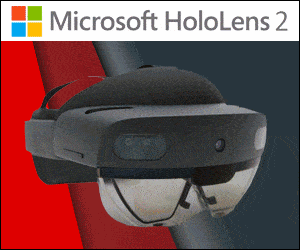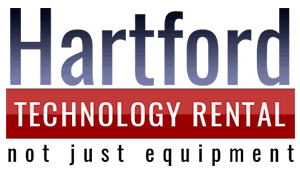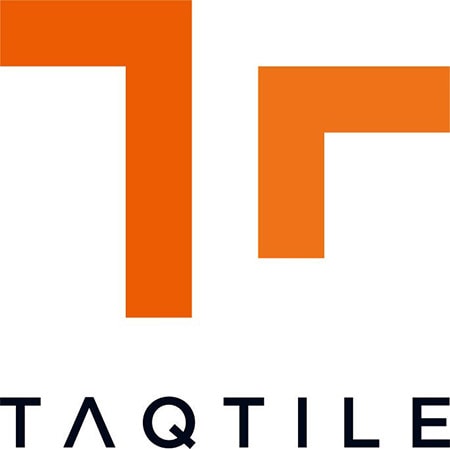Revolutionizing the Training of Front Line Workers with Mixed Reality
According to the National Association of Manufacturers, manufacturing represents 11.39% of the total US economy and 8.51% of the US workforce. When you stop to consider the scope of the industry it becomes startlingly clear just how massive an impact a company like Taqtile and their revolutionary software platform Manifest, can have on productivity. Using a head-worn computer called the HoloLens 2 created and produced by Microsoft, Taqtile’s Manifest is redefining the way training and support is done for manufacturing. In this post, we interview Seattle based Taqtile CEO Dirck Schou to understand the seismic shift that is occurring right this moment.
Tell us about Taqtile
“We are focused on giving deskless, industrial workers an intuitive computing platform the same way that PCs enable knowledge workers. Although this technology will transform the lives of all deskless workers, the areas where this is being rapidly adopted today are in manufacturing, defense, utilities, oil and gas and pharma. We are trying to extend the most functional common denominator of a user interface for hand’s free use. The single biggest thing that the platform does is make it easy and intuitive for non-technical users to capture their knowledge. Once captured, any non-trained or an under-trained employee can easily complete any task. Be that repairing an aircraft engine, operating heavy equipment, or seamlessly handling complex industrial control panels. Most existing solutions, if not all, require a multistep process to create a template or content on a PC that will end up delivering the desired content for the HoloLens 2, and requiring a fair degree of technical expertise in content creation. With Manifest, our idea is to put a HoloLens 2 on your seasoned expert and have them do their job. It’s this easy to create content in Manifest. Our premise is that if it takes a month to create a process that someone is going to follow then we will never get to scale. With Manifest, if it takes an expert 15 minutes to do a job and once a job has been authored it can be used by anyone, anywhere in the world.”
Taqtile believes that experts matter and with Manifest, anyone can be an expert.
What is Taqtile’s origin story?
“In early 2015, we were offered by Microsoft to take a peek behind the proverbial curtain at a vision of the future that would end up changing computing as we knew it. What we saw ended up being the HoloLens – a head mounted computer that could be controlled by voice, gesture and gaze. We were offered the chance to be one of the first six companies to go through what was called “The HoloLens Agency Readiness Program. We took that chance and never looked back.
In order to support this new platform, we needed to bring on new skills and so we acquired a gaming studio that gave us the Unity skill set needed to build software for the HoloLens platform. Those folks became the core of our spatial computing bench. Once onboard, we sent them to Microsoft for a year to learn how to interact with a computer when you don’t have a keyboard or a mouse. How do you control a computer without a keyboard of a mouse? What are the appropriate applications to build for use on this new platform? This new platform offered novel ways of solving problems and we were committed to jumping in with both feet.
The global population of deskless workers is 5 times the number of knowledge workers, and many have nothing more than a spiral notebook or maybe an iPad to help guide their work. But the way they use these digital tools is not transformative, but assistive. We saw that the Hololens could transform a deskless worker in the same way that a desktop has transformed a knowledge worker. They could be safer, more efficient and scalable.
After the first year of learning about the HoloLens we spent the next two years with Microsoft building demo applications for customers like The PGA Tour, The Air Force, energy companies, etc. There was a time that Taqtile had done more one-to-one hands-on demos of the HoloLens than even Microsoft or any other company in the world. We were on the road two weeks a month in the US, Spain, Italy, Germany, Japan, Australia, Singapore and around the world. We got connected with the Public Sector Group in Microsoft and started working with Defense, Oil and Gas, and Manufacturing. They all needed tools for inspection and documentation of inspection.”
Taqtile was founded by Dirck Schou in Seattle and John Tomizuka, who was living in Brazil. They decided on a Skype chat to start a company and they used a Legal Zoom document to get the company off the ground. Chief Customer Success Officer, Kelly Malone, also on the leadership team, is a former Microsoft employee from the original HoloLens development team. He later joined Taqtile and is a foundational team member.
How would you explain the differences between AR, MR and VR to manufacturers considering these technologies?
You must look at the biggest challenges facing manufacturers today. They are dealing with a huge skills gap. More skilled workers are retiring than younger workers are coming in to refresh the workforce. Meanwhile, environments are becoming increasingly complex. How do you train a new workforce in new technologies and make sure that they are doing things correctly, efficiently, and safely? The other consideration is that competition and costs are driving up the demand for highly skilled labor. The more skill a worker has the more expensive they are. If a skilled worker is expensive and geographically inaccessible that’s a recipe for disaster.
One of our customers went from 3.5 weeks to 3 days for training by putting new users on the Manifest. When you look at the fact that the average worker stays on that job for 9 months that’s a massive gain in productivity. It also enables workers to do jobs that they weren’t explicitly trained for, which makes the workforce more flexible.
VR for manufacturers enables you to run simulations, to train better and maybe to better understand how to do a job at some point in the future. VR has to start on a desktop with an engineer creating a virtual environment. For the most part it is limited to training. AR is the technology that can offer you small step-by-step instructions in a static way that is not interactive. VR can tell you what the next step is, but it cannot tell you where the next step is or how to do the next step. Mixed reality is where the sweetness is. It is the truly and deeply transformative tool for the user. There are already many applications for the HoloLens 2 that exist today. Maybe the HoloLens 2 is not intrinsically safe, maybe it’s not waterproof…you do have to consider what environments you use the headset in. But in the very near future, this technology is going to be in safety glasses worn by every single user in every industrial environment. This future will be here before you know it. The HoloLens 2 is allowing manufacturers today to understand how the workforce is going to morph in the future because of these new capabilities. This deskless worker market is five times the size of the ‘knowledge worker’ market and represents the last largest one to one compute-device-to-worker market that will ever exist. From our perspective, Mixed Reality is where all of the growth is located. Mixed Reality is the proper vision of the near future for what this technology eventually will be.
Tell us about the technologies that Taqtile has developed to serve businesses
Remote Assist is the application that Microsoft has built for the HoloLens. Remote assistance is one of the features that Taqtile has built into the Manifest app. If you can image Guides plus Remote Assist plus workflow applications that Microsoft does not have in mixed reality, that’s what Manifest is. The whole back end is completely containerized so you don’t have to be tied to Azure or Dynamics. The Manifest solution can be deployed in a completely air gapped environment and a secure environment. That’s one reason that we have such a depth of penetration in the defense market. Defense does not want to run off of Azure. They want to be able to deploy this in an air gapped, secure environment for field applications. We also support a variety of platforms in addition to the HoloLens 2 including Magic Leap, iPad, Android and a few others as primary first-person platforms.
5G is introducing massive changes to the capabilities of Mixed Reality. 5G is not just the evolution of 4G. When people hear 5G they think of a public network. 5G has designs on replacing wifi, replacing private network topology and also has the ability to slice and dice network traffic and implement network quality of service that was not possible before. 5G is also crucial in the powering of Edge Compute. The carriers are all fighting against the hyperscaler cloud providers like AWS, Azure and Google. With mobile edge compute (MEC) or network edge compute (NEC) their whole plan to maintain relevance is to deploy Edge Compute in their network. It is only accessible over the mobile networks. It is available on every cell tower that does 5G to accommodate field work. The whole point is to be able to use lower latency higher dependent applications as close as possible to where the work is being done. The carriers create value by offering applications and Edge Compute. If 5G is a solution looking for a problem, then we are the problem. Our solution requires very low latency. Manifest sits at the confluence of hyperscalers, 5G and devices.
T-Mobile created an excellent video explaining the value of 5G and holographic video.
How are Taqtile’s technologies helping manufacturers?
PBC Linear going from 3.5 weeks to train someone to 3 days is the perfect example. The complete elimination of errors in their environment. The ability of a manufacturer in a complex environment to support their users remotely using Manifest Connect and templates that are authored in Manifest. It comes down to safety and not just getting people up to speed faster but enabling lower skilled workers to do the job of higher skilled workers. That sounds like something that unions might push back against but they don’t. This is not a replace workers technology this is an enhancement and expansion of workers technology.
How and why did you start working on the HoloLens device?
With the HoloLens you have a production studio on your head that allows you to take pictures, videos, voice to text transcription and other tasks. That was the inception story for what has become Manifest. Manifest is Taqtile’s sole focus. It’s this tool that makes it very easy for subject matter experts to capture their knowledge in such a way that other non-technical people can follow along. If the end user still doesn’t get it, an expert can be called through Manifest Connect and the user can show them what she’s seeing. One additional feature is called Working Together. This allows a team to follow a workflow and the handoff of a job. When multiple employees are tasked with one component of a larger job and everyone is in different locations the steps can be handed off to different employees in different locations in a preplanned or ad hoc manner. All of these features are integrated in to one common interface for a hands-free frontline worker.
What aspects of the HoloLens 2 are helping to inspire innovation at Taqtile?
The HoloLens 2 is the defacto gold standard for a spatial computing device. It has an array of cameras that understand surfaces and our app would not exist without it. We have built an application that leverages the surface dimensions that exist within the HoloLens 2. The fact that you can wear glasses under the headset is also extremely important. Our company wouldn’t exist without it!
Who out there needs to know about Taqtile and how you can help them?
You have to look back over the last two years to really answer this question. In 2019 Microsoft ran out of the first generation of HoloLens units. You had a one-year period where you could not buy a piece of hardware that our software ran on. We could only sell to existing users like big companies, universities, defense companies, etc. It was slim pickings. Then we come in to 2020 when the HoloLens 2 rolls out and the pandemic hit. Introducing a new way of doing jobs in a dangerous health environment created a very delicate proposition. Introducing a new piece of hardware that would need to connect to a network in areas that are typically not network connected is also a difficult thing. So, we had another year pile on top of the previous year that made it very difficult to maneuver.
Toward the end of last year (2020) things started to change. Comfort level with headsets and mixed reality started to open up and we started to get some traction. And these calls were not just from multi-million dollar companies with huge development budgets but from small companies like PBC Linear. They sell these precision items to the national labs for things like nuclear reactors. They are a 300-person manufacturing company. One of probably 20,000 companies of that size and scale. These are the companies that will likely be adopting the technology over the next few years. This technology is not just for big companies. The software is affordable and runs just $200/user/month. It’s not expensive and it’s for the masses. We see a real opportunity and target market in small manufacturers. For additional information about the successful partnership between PBC Linear and Taqtile you can check out this article that was published in Forbes.
How should manufacturers go about identifying the right use case to pilot Manifest technology?
What are some of the main things you should look for? Bad weather is not optimal so indoor uses should be the first consideration. Do you need to deploy the HoloLens 2 in a way that needs a network or not? Where are your biggest needs or challenges? As a manufacturer you may not want to put this in your most dangerous operating environments. Safety should be a major consideration. Where do you have the biggest problems hiring people? Where do you have the biggest multistep processes to complete projects? Where do you have the most instances of manufacturing process failures? If access to expert knowledge is one of the reasons that you are experiencing some problems, then that is a definite candidate for Manifest.
Do end users need to already own or buy the HoloLens 2 to test Manifest?
Taqtile does not have a loaner or demo pool of HoloLens 2 headsets to offer customers. We tell these folks that they will either need to purchase the headsets at $3500/unit or get in touch with Hartford Technology Rentals and arrange to rent headsets for testing. Hartford is the only Microsoft Authorized HoloLens 2 rental partner in North America.
What is Taqtile focusing on right now?
We are focusing on really streamlining our operations including sales and marketing. We feel that the market has been evolving and the product/market fit is very good right now. We want to make sure that our message is crisp and when we have a customer how do we make things as easy as possible for them.
How will AR/MR/VR transform business in the future?
Similar to how desktop computing totally transformed knowledge workers, this technology is going to totally and completely transform the way industrial workers create and access knowledge and information about their jobs. It’s going to change the way that industrial organizations think about human resources and how workers think about their skill sets. It’s going to create an entire marketplace of contributors and cohabitators that have skills and the ecosystem it takes to deploy this technology to this massive need that exists in the market.
How can users contact Taqtile to learn more?
To learn more about Taqtile and Manifest you can click the link or:
Call: 855-827-8453
Email: info@taqtile.com
To contact Hartford Technology Rental and arrange the rental of the Microsoft HoloLens 2 please call us at 888-520-5667 or visit our website at www.hartfordrents.com.
HoloLens 2 “Try Before You Buy” Program for Manufacturers
Want to see if the HoloLens 2 is right for you. For a limited time we’re offering a 14 day rental at 35% discount off the all-inclusive rental price. We’ll also preload some of the leading applications HoloLens 2 for you to try.



